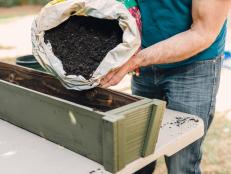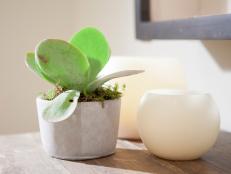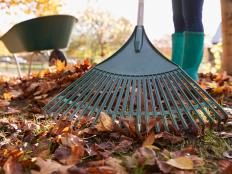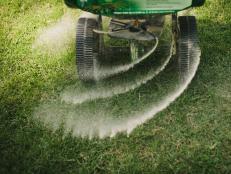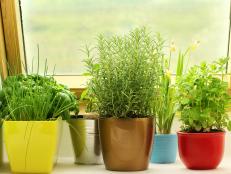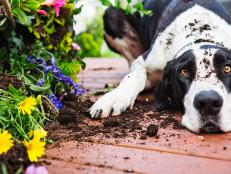Effective Fungicides
Fungal diseases can be difficult to control and, once they infect a plant, often hard to get rid of. If left untreated, a disease can spread not just all over a single plant but also to other plants nearby. As a result, plants can become unsightly. Some fungal diseases may even ultimately destroy infected plants.
To avoid having fungal disease in the first place:
- Provide good air circulation around plants by properly spacing them apart.
- Water around the base of plants, instead of on the leaves.
- Rake and remove fallen leaves of infected plants.
- Apply a fresh layer of mulch to garden beds at the beginning of the growing season.

If fungal disease is still a problem in your garden, consider applying a fungicide. A wide variety of fungicides are available on the market, and there are a number of homemade remedies. It can often be confusing to know which treatments to use. Master gardener Paul James offers a few simple, easy-to-use fungicidal treatment options.
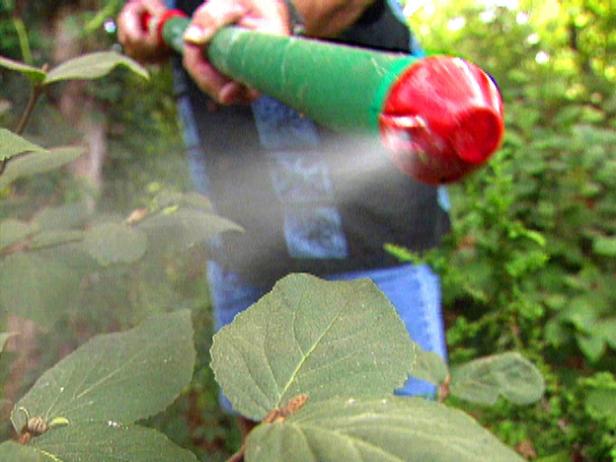
- Milk is a safe method that can be used to treat powdery mildew, especially on cucumbers. James recommends using milk full strength or mixing a 50:50 solution of milk and water (one part milk to one part water). Use it as a spray, applying milk treatment onto the leaves of the infected plant.
- Garlic is gaining in popularity as both a fungicide and insecticide. To make your own garlic treatment, mix 10 cloves of garlic with one pint of water in a blender. Strain the mixture. Use this garlic concoction as a foliar spray. But keep in mind that garlic is extremely non-selective. "It destroys both beneficial insects as well as pests," James says. "So use it wisely and use it sparingly."
- Horticultural oils, or summer oils, also make effective fungicidal and insecticidal treatments. Not only do highly refined horticultural oils kill soft-bodied insect pests like aphids that often transmit fungal disease from plant to plant, but they also create a barrier that prevent infection from fungal diseases, especially rust and mildew.
- Sulfur, used as a fungicide and insecticide, can be applied as either a dust or a spray using wettable sulfur. Purchased in the dust form, wettable sulfur is mixed with water to create a spray treatment. Either application method is suitable. One advantage to the dust form is saving time and energy from mixing the spray. The advantage, however, to using a spray is that there can be more uniform spray coverage on the plant. If using the dust form, wear a face-mask respirator when applying sulfur since it can irritate the eyes and lungs. Also, don't apply sulfur when temperatures are above 85 degrees F as it can burn leaf surfaces.
- Copper, when used as a Bordeaux mixture (which is a combination of copper sulfate and lime), can be used to treat a number of fungal diseases, especially downy mildew. Bordeaux mixture is typically applied as a dust. Other copper-based products are available in the spray form. However, keep in mind that copper-based products can be toxic to some plants and are highly toxic to humans.
- Compost tea has also been quite effective as a fungicidal treatment. James has used this non-toxic remedy as a spray to treat powdery mildew on a variety of plants, particularly crape myrtles.
- James' ultimate fungicidal treatment is baking soda, when mixed into a concoction known as the Cornell formula. The Cornell formula consists of baking soda, horticultural oil and insecticidal soap (optional). To make your own supply of the Cornell formula, mix one tablespoon each of baking soda, horticultural oil and insecticidal soap together in one gallon of water. Shake mixture well and use as a spray. To keep baking soda agitated within the spray solution, James recommends adding a golf ball inside the spray apparatus.

When treating fungal disease, it is important to apply a fungicidal treatment every seven to 10 days in order to be most effective. Keep in mind that when applying either a spray or dust, make sure to apply the treatment evenly on the top and underside of the leaves.






